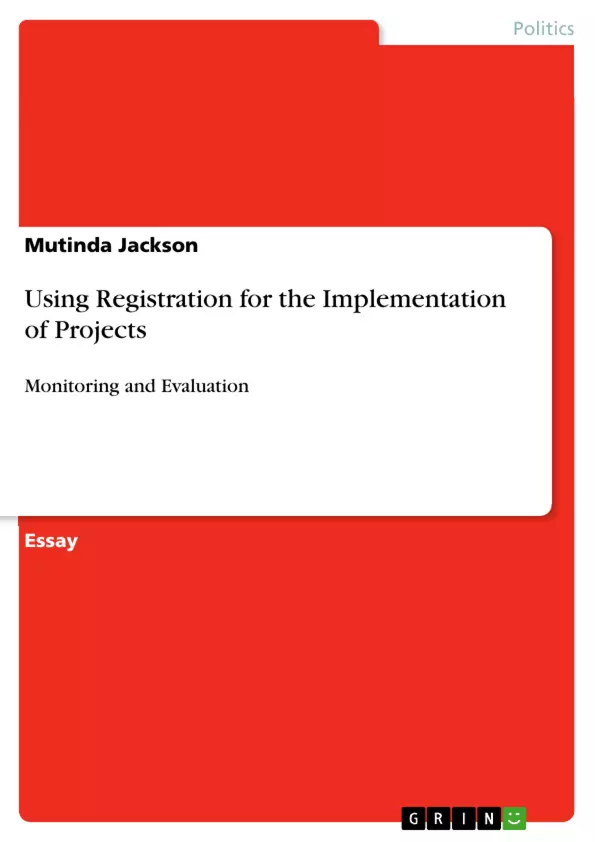First, M&E reports have outputs that reflect the critical stated strategic objectives of the organization. Secondly, these reports provide clear indicators against which the organization is working, and being measured; and that within the organization, information for the outputs being measured is available and verifiable. Thirdly, a good M&E reports identify key issues and root of the problems that are addressed to the stakeholders.
A Monitoring and Evaluation reports must be self oriented, cost effective and result oriented. They should be updated regularly and must track and with effect, support the policy reform process. These reports should be user-friendly in understanding the current issues of the relevant policy. A rationale for how future performance targets are set is a feature of these reports. These reports should make the decision making at management levels easy and efficient.
M&E reports must have technically accurate information to convey to the stakeholders. This report should have information that is legal, ethical and due regard for the welfare of the stakeholders. An effective and good M&E report presents its findings in a positive way and as constructive criticism. These reports identify the responsible persons to finalize the actions agreed.
The approaches in Community Participatory Monitoring and Evaluation (PM&E) are more cost-effective, accurate and sustainable than the conventional approaches. Participation in decision-making processes can also motivate people to want to see those decisions implemented effectively
Inhaltsverzeichnis (Table of Contents)
- REGISTRATION
- QUESTIONNAIRES
- INTERVIEW
- OBSERVATIONS
- REPORTING
- DATA QUALITY PLAN
- Definition of a Record
- Timeliness
- Completeness
- Accuracy
- Monitoring
- Incentives and Enforcement
- DISSEMINATION OF INFORMATION
Zielsetzung und Themenschwerpunkte (Objectives and Key Themes)
This document examines various methods of data collection used in research projects, focusing on their strengths, weaknesses, and applications. It guides users on effective data gathering techniques, highlighting the importance of accuracy, completeness, and timeliness in data collection and management.
- Data Collection Techniques
- Data Quality Management
- Information Dissemination Strategies
- Data Validation and Reporting
- Effective Data Analysis
Zusammenfassung der Kapitel (Chapter Summaries)
- REGISTRATION: This chapter delves into the importance of registration as a data collection method. It discusses the role of registers in capturing accurate data, facilitating project implementation, and ensuring compliance with regulations. Examples of data collected in various registers, such as transportation and processing firms, are provided.
- QUESTIONNAIRES: This chapter explores the use of questionnaires in data collection. It highlights the advantages and limitations of this method, including the need for high literacy levels and accurate translations. Different types of questions used in questionnaires are also discussed.
- INTERVIEW: This chapter discusses the different types of interviews employed in data collection, including controlled, open, and structured interviews. The importance of trained enumerators, pilot testing, and combining interviews with observation methods is emphasized.
- OBSERVATIONS: This chapter examines the role of observation in data collection, covering direct measurements, interviews, and surveys. It stresses the need for adequate training and supervision, and discusses the importance of considering potential biases in law enforcement and surveillance activities.
- REPORTING: This chapter focuses on reporting methods, including the use of external information sources, data forms, and corporate records. The importance of data validation, the need for quality control, and the benefits of data aggregation are highlighted.
- DATA QUALITY PLAN: This chapter presents a comprehensive data quality plan, outlining key components like record definition, timeliness, completeness, accuracy, monitoring, and incentives. It emphasizes the importance of clear guidelines and strategies for ensuring data quality.
- DISSEMINATION OF INFORMATION: This chapter explores various methods of disseminating project information to stakeholders and the wider audience. It discusses the benefits of different approaches, including newsletters, reports, conferences, and online platforms. The importance of selecting appropriate dissemination strategies for different audiences is highlighted.
Schlüsselwörter (Keywords)
This document covers data collection techniques, data quality, information dissemination, reporting, data validation, accuracy, completeness, timeliness, monitoring, incentives, project success, stakeholders, and audience engagement.
- Citation du texte
- Mutinda Jackson (Auteur), 2018, Using Registration for the Implementation of Projects, Munich, GRIN Verlag, https://www.grin.com/document/430926



